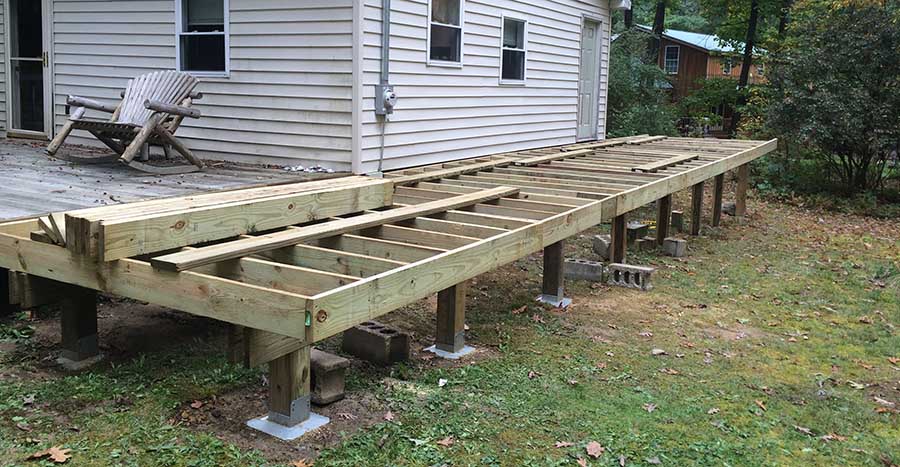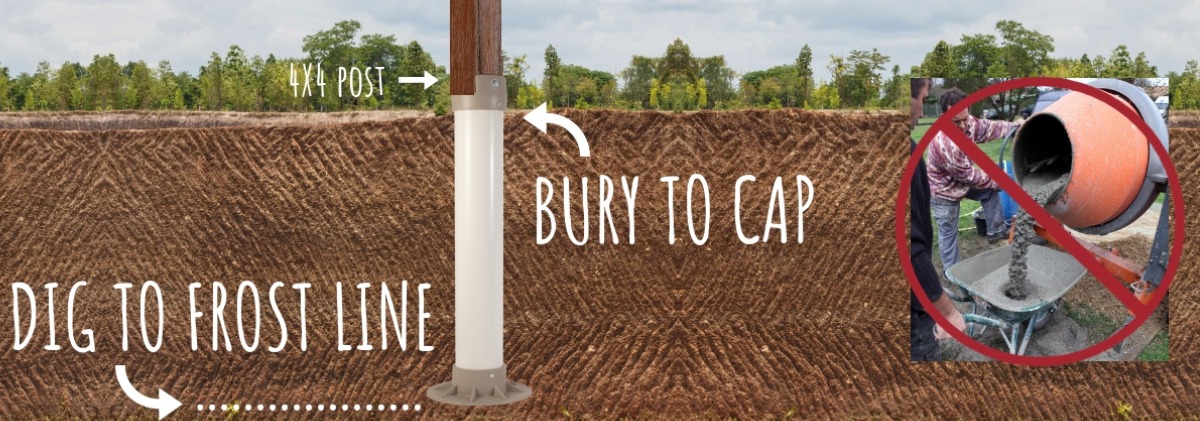Picking the Right Deck Footings for Security and Toughness
The long life and safety of your deck depend greatly on the kind of footings you choose, as they give the essential assistance and security to endure the examination of time. In this conversation, we will check out the numerous types of deck footings, take into consideration the crucial variables to weigh when making a choice, and dive right into the pros and cons of different options.
Kinds of Deck Grounds
These grounds consist of a round opening filled up with concrete, which supplies a solid foundation for the deck articles. Concrete pier footings are reasonably very easy to mount and supply excellent stability, making them a preferred selection for many deck jobs.
These footings are mounted by screwing them into the ground, which produces a protected foundation for the deck. They likewise permit for simple modification and leveling of the deck if needed.
Alternatively, some home builders select precast concrete footings. These grounds are constructed from long lasting concrete and come in numerous forms and dimensions to fit various deck layouts. Precast concrete footings are practical to set up and give a steady base for the deck structure.
Finally, an additional choice is the post-in-anchor ground system. This kind of ground involves driving a metal support right into the ground and connecting it to the deck article. It uses flexibility in regards to positioning the deck blog posts and appropriates for decks with lightweight structures.
When choosing the right type of deck ground, it is important to take into consideration elements such as soil conditions, deck tons, and neighborhood structure codes (Deck Footings). Consulting with a specialist specialist or architectural designer can help make certain the appropriate footing is chosen for a secure and steady deck
Aspects to Think About When Selecting Footings
When picking the suitable grounds for a deck, it is vital to carefully think about numerous elements such as dirt conditions, deck lots, and adherence to regional building codes. These factors play a considerable function in making sure the security and sturdiness of the deck structure.
Among the main elements to think about is the dirt conditions. The sort of dirt on which the deck will be constructed determines the kind of footings called for. For example, decks improved loose or sandy soils may call for deeper grounds to give sufficient support and prevent settling. On the other hand, decks improved clay or large dirts might require footings that can accommodate the dirt's tendency to expand and agreement.
Another essential element is the deck lots. The weight of the deck, consisting of the products used and any kind of possible online loads such as furniture or gatherings, have to be considered when choosing grounds. The grounds must be developed to bear the weight of the deck and disperse it evenly to stop any type of structural concerns or failures.
Last but not least, adherence to regional building ordinance is paramount. Structure codes vary from area to region, and it is necessary to abide by the certain demands set by the neighborhood authorities. Deck Footings. These codes guarantee that the deck is constructed safely and fulfills the essential requirements for architectural stability and load-bearing ability
Concrete Footings: Disadvantages and pros

Concrete grounds provide several advantages and drawbacks when utilized as the foundation for a deck. On the favorable side, concrete grounds give excellent security and durability.
Another advantage of concrete footings is their versatility. They can be poured into various forms and sizes to accommodate various deck designs and configurations. Concrete grounds can be tailored to fit the certain demands and needs of the deck framework.
Nevertheless, there are also some drawbacks to using concrete grounds. One significant drawback is the cost and labor associated with their installment. Concrete grounds need excavation and typically need the assistance of hefty equipment. This can enhance the overall price of the deck job and may require specialist aid.

Helical Piers Vs. Sonotubes: Which Is Much better?
In taking into consideration the structure choices for a deck, the comparison in between helical piers and sonotubes is important in figuring out the exceptional choice. They are twisted right into the ground utilizing hydraulic machinery, providing a sturdy and steady foundation for the deck.
The helical plates on the piers produce a strong grasp with the soil, moving or preventing any kind of movement of the deck. Sonotubes, on the various other hand, rely exclusively on the concrete filling for security, which may not supply the exact same degree of stamina and resistance.
In regards to setup, helical piers are relatively less complicated and faster to set up contrasted to sonotubes. The hydraulic machinery utilized to twist the piers right into the Homepage ground makes sure a quick and effective process. Sonotubes, on the various other hand, require excavating openings and pouring concrete, which can be lengthy and labor-intensive.
Additionally, helical piers are a more functional option. They can be utilized in numerous soil conditions and can be changed or enhanced if required. Sonotubes, on the various other hand, might require extra assistance, such as rebar, in particular dirt conditions or areas with high tons demands.
Picking the Right Footings for Your Deck's Dimensions
For optimal structural stability, it is essential to very carefully select the ideal footings that align with the dimensions of your deck. The dimensions of your deck, including its elevation, size, and length, play a significant function in identifying the kind and dimension of grounds needed.
When choosing footings for your deck, it is essential to think about the load-bearing ability of the dirt. The weight of the deck, integrated with the weight of any type of furniture or people on it, exerts a significant force on the footings (Deck Footings). It is crucial to pick grounds that can effectively support this weight without sinking or moving over time.
The shapes and size of the grounds must also be thought about. Larger decks with greater measurements need larger grounds to supply adequate stability and assistance. The form of the footings, whether they are round or square, relies on the design and design of the deck. Additionally, the deepness at which the footings are mounted ought to be figured out based upon the frost line in your area to stop any type of heaving or changing as a result of click for more freezing temperatures.
Final Thought
In final you can try this out thought, selecting the right deck grounds is essential for ensuring stability and toughness. Variables such as the type of footings, the deck's dimensions, and the pros and disadvantages of various options ought to be thought about.
These grounds are composed of a round opening loaded with concrete, which provides a solid foundation for the deck posts. Concrete pier footings are relatively easy to install and provide outstanding stability, making them a prominent option for numerous deck jobs.
Precast concrete grounds are practical to set up and provide a stable base for the deck structure.
It offers flexibility in terms of placing the deck articles and is suitable for decks with lightweight structures.
Concrete footings offer several benefits and disadvantages when used as the structure for a deck.